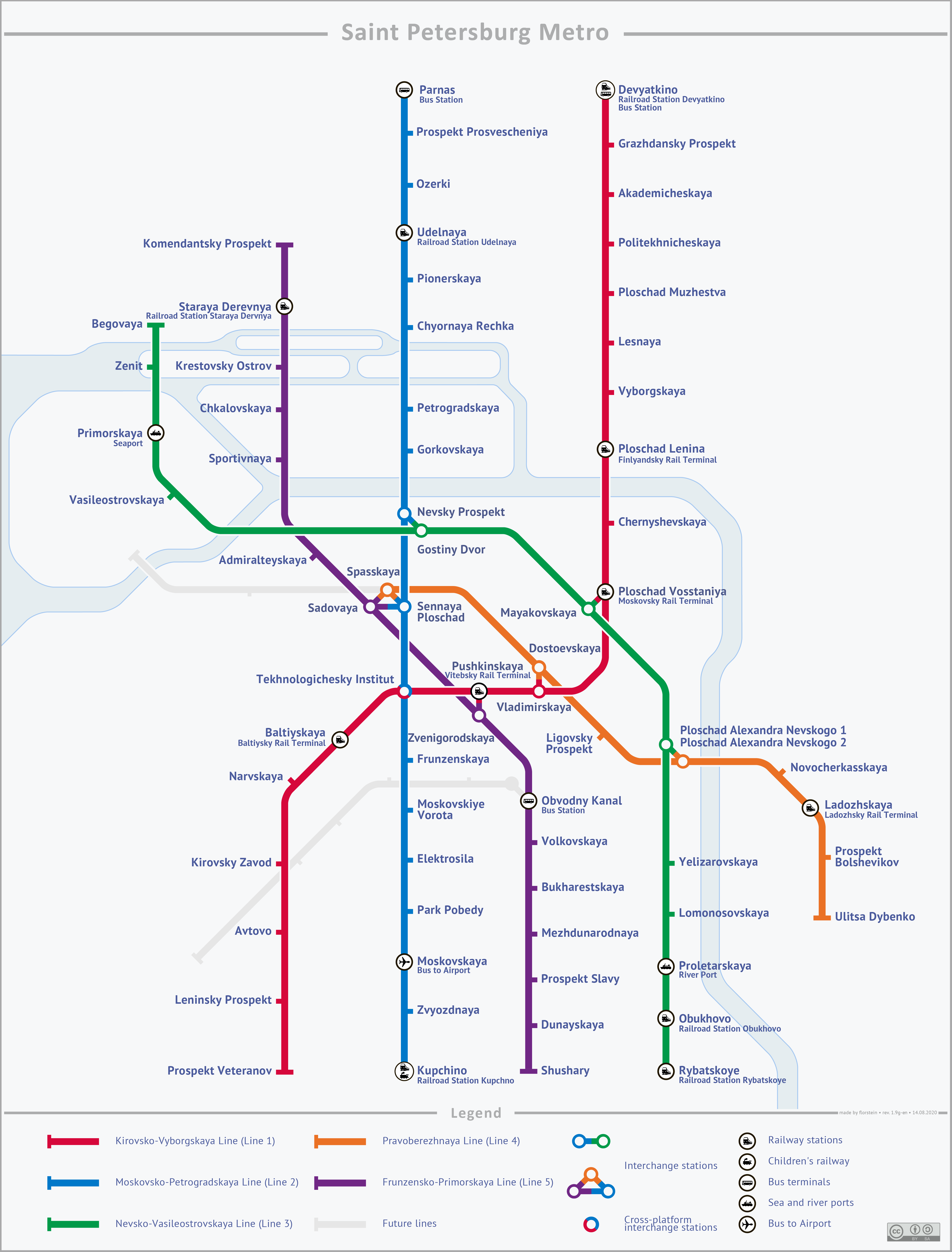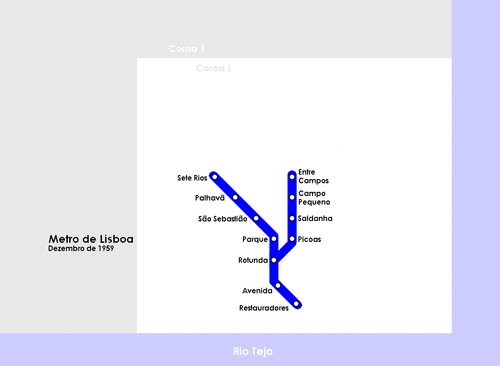|
Heavy-rail
Various terms are used for passenger railway lines and equipment; the usage of these terms differs substantially between areas: Rapid transit A rapid transit system is an electric railway characterized by high speed (~) and rapid acceleration. It uses passenger railcars operating singly or in multiple unit trains on fixed rails. It operates on separate right-of-way (transportation), rights-of-way from which all other vehicular and foot traffic are excluded (i.e. is fully grade separation, grade-separated from other traffic). The APTA definition also includes the use sophisticated railway signalling, signaling systems, and railway platform height, high platform loading. Originally, the term ''rapid transit'' was used in the 1800s to describe new forms of quick urban public transportation that had a right-of-way separated from street traffic. This set rapid transit apart from horsecars, trams, streetcars, bus, omnibuses, and other forms of public transport. A variant of the ter ... [...More Info...] [...Related Items...] OR: [Wikipedia] [Google] [Baidu] |
Rotterdam Metro
The Rotterdam Metro () is a rapid transit system operated in Rotterdam, Netherlands and surrounding municipalities by RET. The first line, called ''Noord – Zuidlijn'' (North – South line) opened in 1968 and ran from Centraal Station to Zuidplein, crossing the river Nieuwe Maas in a tunnel. It was the first metro system to open in the Netherlands. At the time it was also one of the shortest metro lines in the world with a length of only . In 1982 a second line was opened, the ''Oost – Westlijn'' (East – West line), running between Capelsebrug and Coolhaven stations. In the late 1990s, the lines were named after two historic Rotterdam citizens, the Erasmus Line (North – South) after Desiderius Erasmus and the Caland Line (East – West) after Pieter Caland. As of December 2009, these names were dropped again in favour of a combination of letters and colours, to emphasise and clarify the difference between the separate branches, especially of the former East – Wes ... [...More Info...] [...Related Items...] OR: [Wikipedia] [Google] [Baidu] |
Rapid Transit
Rapid transit or mass rapid transit (MRT) or heavy rail, commonly referred to as metro, is a type of high-capacity public transport that is generally built in urban areas. A grade separation, grade separated rapid transit line below ground surface through a tunnel can be regionally called a subway, tube, metro or underground. They are sometimes grade-separated on elevated railways, in which case some are referred to as el trains – short for "elevated" – or skytrains. Rapid transit systems are usually electric railway, electric railways, that unlike buses or trams operate on an exclusive right-of-way (transportation), right-of-way, which cannot be accessed by pedestrians or other vehicles. Modern services on rapid transit systems are provided on designated lines between metro station, stations typically using electric multiple units on railway tracks. Some systems use rubber-tyred metro, guided rubber tires, magnetic levitation (''maglev''), or monorail. The stations typica ... [...More Info...] [...Related Items...] OR: [Wikipedia] [Google] [Baidu] |
Public Transport
Public transport (also known as public transit, mass transit, or simply transit) are forms of transport available to the general public. It typically uses a fixed schedule, route and charges a fixed fare. There is no rigid definition of which kinds of transport are included, and air travel is often not thought of when discussing public transport—dictionaries use wording like "buses, trains, etc." Examples of public transport include Public transport bus service, city buses, trolleybuses, trams (or light rail) and Passenger rail transport, passenger trains, rapid transit (metro/subway/underground, etc.) and ferry, ferries. Public transport between cities is dominated by airlines, intercity bus service, coaches, and intercity rail. High-speed rail networks are being developed in many parts of the world. Most public transport systems run along fixed routes with set embarkation/disembarkation points to a prearranged timetable, with the most frequent services running to a headwa ... [...More Info...] [...Related Items...] OR: [Wikipedia] [Google] [Baidu] |
Light Rail
Light rail (or light rail transit, abbreviated to LRT) is a form of passenger urban rail transit that uses rolling stock derived from tram technology National Conference of the Transportation Research Board while also having some features from heavy rapid transit. The term was coined in 1972 in the United States as an English equivalent for the German word ''Stadtbahn'', meaning "city railway". From: 9th National Light Rail Transit Conference Different definitions exist in some countries, but in the United States, light rail operates primarily along exclusive Right_of_way#Rail_right_of_way, rights-of-way and uses either individual tramcars or multiple units coupled together, with a lower capacity and speed than a long heavy rail passenger train or rapid transit system. Narrowly defined, light rail transit uses rolling stock that is similar to that of a traditional tram, while operating at a higher capacity and speed, often on an exclusive right-of-way. In broader usage, light ... [...More Info...] [...Related Items...] OR: [Wikipedia] [Google] [Baidu] |
Amsterdam Metro
The Amsterdam Metro () is a rapid transit system serving Amsterdam, Netherlands, and extending to the surrounding List of municipalities of the Netherlands, municipalities of Diemen and Ouder-Amstel. Until 2019, it also served the municipality of Amstelveen, but this route was closed and converted into a tram line. The network is owned by the City of Amsterdam and operated by municipal public transport company Gemeente Vervoerbedrijf (GVB), which also operates trams, free ferries and local buses. The metro system consists of five routes and serves 39 stations, with a total length of . Three routes start at Amsterdam Centraal station, Amsterdam Centraal: Route 53 and Route 54 connect the Amsterdam-Centrum, city centre with the suburban residential towns of Diemen, Duivendrecht and Amsterdam-Zuidoost (the city's southeastern borough), while Line 51 (Amsterdam Metro), Route 51 first runs south and then follows a circular route connecting the southern and western boroughs. Route 50 c ... [...More Info...] [...Related Items...] OR: [Wikipedia] [Google] [Baidu] |
Saint Petersburg Metro
The Saint Petersburg Metro () is a rapid transit system in Saint Petersburg, Russia. Construction began in early 1941, but was put on hold due to World War II and the subsequent Siege of Leningrad, during which the constructed stations were used as bomb shelters. It was finally opened on 15 November 1955. Formerly known as the ''Order of Lenin Leningrad Metro named after Vladimir Lenin, V. I. Lenin'' (), the system exhibits many typical Stalinist architecture, Soviet designs and features exquisite decorations and artwork making it one of the most attractive and elegant metros in the world. Due to the Geography of Saint Petersburg, city's unique geology, the Saint Petersburg Metro is also one of the deepest metro systems in the world and the deepest by the average depth of all the stations. The system's deepest station, Admiralteyskaya (Saint Petersburg Metro), Admiralteyskaya, is below ground. The network consists of 5 lines with a total length of . It has list of Saint Petersbur ... [...More Info...] [...Related Items...] OR: [Wikipedia] [Google] [Baidu] |
Warsaw Metro
The Warsaw Metro () is a rapid transit underground system serving the Poland, Polish capital Warsaw. It currently consists of two lines, the north–south M1 (Warsaw), M1 line which links central Warsaw with its densely populated northern and southern Dzielnica, districts, and the east–west M2 (Warsaw), M2 line. Three more lines (M3 (Warsaw), M3, M4 (Warsaw), M4, and M5 (Warsaw), M5) are planned. The system is operated by Metro Warszawskie, a company owned by the city, and managed by Public Transport Authority (Warsaw), Public Transport Authority in Warsaw. As of , it is the only metro system in Poland. The first section of M1 was opened in 1995 and the line was gradually extended until it reached its full length in October 2008. The contract for the construction of the initial central section of M2 was signed on 28 October 2009 and construction began on 16 August 2010. The initial segment of M2, measuring with seven stations, one of which, Świętokrzyska (Warsaw Metro), Świ ... [...More Info...] [...Related Items...] OR: [Wikipedia] [Google] [Baidu] |
Helsinki Metro
The Helsinki Metro (, ) is a rapid transit system serving the Helsinki capital region, Finland. It is the world's most northern, the world's northernmost metro system. It was opened to the general public on 2 August 1982 after 27 years of planning. It is operated by Helsinki City Transport and Metropolitan Area Transport Ltd for Helsinki Regional Transport Authority and carries 92.6 million passengers per year. The system consists of 2 lines, serving a total of 30 stations. It has a total length of . It is the predominant rail link between the suburbs of East Helsinki and the western suburbs in the city of Espoo and downtown Helsinki. The line passes under Helsinki Central Station, allowing passengers to transfer to and from the Helsinki commuter rail network, including trains on the Ring Rail Line to Helsinki Airport. History 1955–67: Light rail plan The initial motion for building a metropolitan railway system in Helsinki was made in September 1955, though during th ... [...More Info...] [...Related Items...] OR: [Wikipedia] [Google] [Baidu] |
Lisbon Metro
The Lisbon Metro () is a rapid transit system in Lisbon, Portugal. Opened in December 1959, it was the first rapid transit system in Portugal. , the system's four lines total of route and serve 56 stations. History Initial plans The idea of building a system of underground railways for the city of Lisbon first arose in 1888. It was first proposed by Henrique de Lima e Cunha, a military engineer who had published a proposal in the journal ''Obras Públicas e Minas'' ''(Public Works and Mines)'' for a network with several lines that could serve the Portuguese capital. Concrete plans took longer to evolve, though. Lanoel Aussenac d'Abel and Abel Coelho presented theirs in 1923, and José Manteca Roger and Juan Luque Argenti theirs one year later, in 1924. None of these plans were carried out. After World War II, in which Portugal remained neutral, the national economy took off and the financial possibilities arising from the Marshall Plan provided a strong boost to the pote ... [...More Info...] [...Related Items...] OR: [Wikipedia] [Google] [Baidu] |
Barcelona Metro
The Barcelona Metro (Catalan language, Catalan and Spanish language, Spanish: ) is a rapid transit network that runs mostly underground in central Barcelona and into the city's suburbs. It is part of the larger public transport system of Barcelona, the capital of Catalonia, Spain, with unified fares under the (ATM) scheme. As of 2024, the network is operated by two separate companies: (TMB) and (FGC). It is made up of 12 lines, combining the lines owned by the two companies. Two lines, Barcelona Metro line 9, L9 and Barcelona Metro line 10, L10, are being built at present, with both lines having different sections of each opened between 2009 and 2021. They are due to be fully completed in 2030. Three lines on the network have opened as automatic train operation/vehicular automation, driverless vehicle systems since 2009: Line 11 being converted to driverless first, and then Lines 9 and 10, opening up driverless. It is one of only two metros worldwide to operate on ... [...More Info...] [...Related Items...] OR: [Wikipedia] [Google] [Baidu] |







